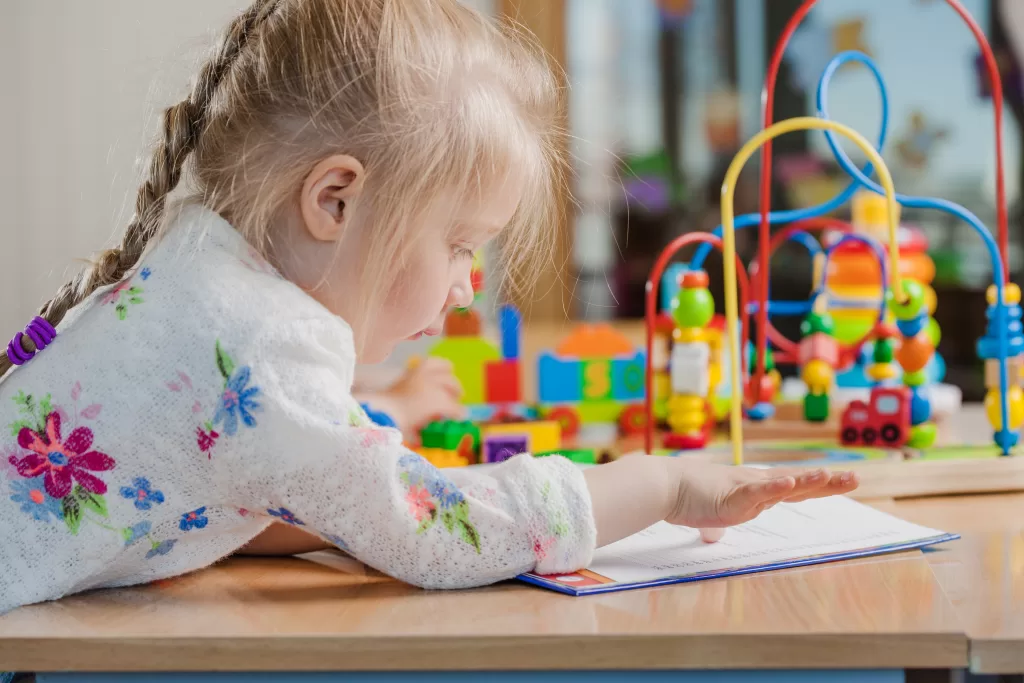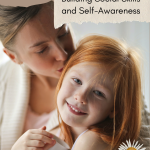Parent's Guide to Nurturing their Child's Emotional Development: Milestones, Strategies and Tips
Emotional development is strongly linked to the quality of relationships a child has with their caregivers, especially their parents. Infants and young children rely on their parents to meet their physical and emotional needs, and to provide them with a secure and nurturing environment in which to develop.
Positive early experiences with caregivers are critical for healthy emotional development. For example, when parents are responsive to their child’s needs, provide consistent and loving care, and create a warm and supportive environment, children are more likely to develop secure attachment relationships, which are associated with better outcomes in terms of social and emotional development.
Why it is important?
Secure attachment relationships involve a child feeling safe, comforted, and supported by their parent, and this sense of security allows them to explore the world and develop new skills with confidence. When a child feels secure in their relationship with their parent, they are more likely to develop healthy emotional regulation skills, as well as social skills like empathy, perspective-taking, and cooperation.
Conversely, when a child experiences inconsistent or neglectful caregiving, they may struggle with emotional regulation and develop maladaptive coping strategies, such as aggression or withdrawal. This can also lead to difficulties with forming healthy relationships in the future.

Image by Freepik
How emotional development happens in a child from birth to next few years? – Milestones, Strategies and Tips
Emotional development is a complex process that begins at birth and continues throughout the lifespan. During the first few years of life, children develop important emotional skills that shape their social and emotional development. Here’s a general overview of how emotional development happens in a child:
From Birth to 6 months
As infants grow from birth to 6 months old, they undergo significant changes in their emotional development. At the start of this period, they are highly dependent on their caregivers for basic needs like food and comfort, and they express their emotions primarily through crying, facial expressions, and body language. Here are some examples of how emotional development changes during this stage:
Infants start to differentiate between different emotions: By around 2-3 months old, infants begin to distinguish between different facial expressions and vocal cues that correspond to different emotions. For example, they may start to recognize the difference between a smile and a frown, or between a happy coo and a distressed cry.
Infants begin to show signs of social referencing: As infants become more aware of their surroundings, they may start to look to their caregivers for cues about how to react to new situations. For example, if a caregiver appears calm and relaxed when faced with a new environment or situation, the infant may also feel more at ease.
Infants develop attachment relationships: By around 4-6 months old, infants may begin to form attachment relationships with their caregivers. They may show preference for certain individuals, seek out physical contact and reassurance, and respond positively to familiar faces and voices.
Infants start to engage in reciprocal interactions: As infants become more adept at expressing themselves and recognizing others’ emotions, they may start to engage in back-and-forth interactions with their caregivers. For example, they may mimic facial expressions or vocalizations, or take turns “talking” with their caregivers.
From 6 months to 1 year
Between 6 months and 1 year of age, babies continue to develop emotionally, building on the skills they acquired during the first 6 months of life. During this stage, they start to develop a sense of trust and security in their relationships with their caregivers, and they begin to experience a wider range of emotions. Here are some examples of how emotional development changes during this stage:
Infants become more expressive: As infants develop better control over their bodies, they become more expressive in how they communicate their emotions. They may use a wider range of facial expressions and vocalizations to convey their feelings, such as smiling, laughing, squealing, or crying.
Infants develop stranger anxiety: As infants become more aware of the people and objects around them, they may start to feel uncomfortable or fearful around unfamiliar people or situations. This is known as stranger anxiety and typically develops around 8-10 months old.
Infants show preferences for familiar people and objects: As infants become more attached to their caregivers, they may show a preference for familiar people and objects. They may become upset when separated from their caregiver, or seek out familiar toys or blankets for comfort.
Infants may start to experience separation anxiety: As infants become more aware of their attachment relationships, they may start to experience separation anxiety when their caregiver leaves. They may cry or become upset when their caregiver is out of sight, and seek out physical contact and reassurance when they return.
Infants may start to imitate the emotions and behaviors of others: As infants become more social, they may start to imitate the emotions and behaviors of others around them. For example, they may clap along with others when they are happy, or cry when they see someone else crying.
After the age of 1
Children continue to grow emotionally, becoming increasingly independent and self-aware. They begin to develop a stronger sense of self, which allows them to better understand and regulate their own emotions, and to develop deeper relationships with others. Here are some examples of how emotional development changes during this stage:
Children develop a sense of self: As children grow, they become more self-aware and develop a sense of self. They may start to use personal pronouns like “I” and “me,” and begin to understand that they are separate individuals from others.
Children develop a wider range of emotions: As children’s experiences and interactions with the world around them become more complex, they begin to experience a wider range of emotions. They may experience more nuanced emotions, such as guilt, jealousy, and empathy, and learn to express these emotions in more sophisticated ways.
Children learn to regulate their emotions: As children’s understanding of their own emotions grows, they also learn to regulate their emotions. They may develop coping strategies, such as taking deep breaths or seeking support from others, to manage strong emotions.
Children develop deeper relationships with others: As children become more independent and self-aware, they also develop deeper relationships with others. They may form strong attachments to family members, friends, and teachers, and develop the ability to share and cooperate with others.
Children may begin to understand and follow social rules: As children become more social and interact with others more frequently, they begin to understand social rules and expectations. They may learn to take turns, share toys, and follow basic social norms.
After the age of 2
After 2 years of age, children continue to make significant strides in their emotional development, building on the skills they have acquired during the previous stages. They become more independent and assertive, with a growing sense of autonomy and self-awareness. Here are some examples of how emotional development changes during this stage:
Children become more self-aware: After 2 years old, children become increasingly aware of themselves as individuals. They may refer to themselves by name or use personal pronouns like “me” and “mine.” They also begin to develop a sense of ownership over their possessions and their environment.
Children develop a stronger sense of autonomy: As children become more self-aware, they also develop a stronger sense of autonomy. They may assert their independence more frequently, wanting to do things on their own and make their own decisions.
Children continue to regulate their emotions: As children continue to experience a wide range of emotions, they also continue to develop their ability to regulate their emotions. They may develop more sophisticated coping strategies, such as taking deep breaths or counting to ten, to manage strong emotions.
Children become more empathetic: As children become more socially aware, they also become more empathetic. They may show concern for others when they are upset or hurt, and may try to comfort them in their own way.
Children begin to understand cause and effect: At 2 years old, children begin to understand the concept of cause and effect. They may begin to understand that their actions can have consequences, both positive and negative.
After the age of 3
After the age of 3, children continue to develop their emotional intelligence as they encounter new experiences and challenges. Here are some of the key stages of emotional development that children typically go through during this time:
Improved communication of emotions: At this stage, children begin to use language to express their emotions. They can label their feelings and describe why they feel that way. For example, a child may say “I’m sad because my friend didn’t play with me today.”
Increased empathy: Children become better at understanding and responding to the emotions of others. They may show concern or offer comfort when they see someone who is upset or hurt. For example, a child may hug their friend who is crying and say “I’m sorry you got hurt.”
Developing self-regulation: Children begin to learn how to manage their own emotions and behaviors. They may use self-calming techniques such as taking deep breaths or counting to 10 when they feel upset or frustrated. For example, a child may take a deep breath and say “I’m angry, but I don’t want to hit my friend.”
Improved social skills: Children become more skilled at navigating social situations and relationships. They can take turns, share, and negotiate with others. For example, a child may say “Can I play with that toy when you’re done?”
Increased self-awareness: Children become more aware of their own strengths and weaknesses, likes and dislikes, and preferences. They begin to develop a sense of self-identity. For example, a child may say “I’m good at drawing, but I don’t like loud noises.”
By supporting your child’s emotional development during these stages, you can help them build the skills they need to thrive in their relationships and navigate the complexities of life with confidence and resilience.
After the age of 4
During this stage of emotional development, parents can support their child’s growth by encouraging independence while still providing a safe and secure environment, modeling healthy social skills and emotional regulation, and fostering their child’s sense of humor and creativity. By providing a supportive and nurturing environment, parents can help their child develop important emotional skills that will benefit them throughout their life.
Improved emotional regulation: By the age of 4, children are better able to regulate their emotions and express them in appropriate ways. For example, a child may take deep breaths or count to 10 when feeling angry or frustrated.
Increased independence: Children become more independent and self-sufficient, which can lead to a stronger sense of self-confidence and self-esteem. For example, a child may want to dress themselves or choose their own activities.
Developing social skills: Children begin to interact more with others and develop important social skills such as sharing, taking turns, and cooperating. For example, a child may initiate play with other children and use negotiation skills to resolve conflicts.
Understanding emotions in others: Children become better at reading and understanding the emotions of others, which can help them navigate social situations more effectively. For example, a child may notice when a friend is sad and offer them a comforting hug.
Developing a sense of humor: Children start to develop a sense of humor and enjoy making others laugh. For example, a child may tell silly jokes or make funny faces to make their parents or friends laugh.
After the age of 5
During this stage of emotional development, parents can support their child’s growth by encouraging empathy and perspective-taking, providing opportunities for children to explore their own identity and interests, modeling effective emotional regulation, and fostering a sense of self-efficacy and independence.
Increased empathy: Children become more skilled at understanding and empathizing with the feelings of others. They may show concern for the well-being of others and offer comfort when someone is upset.
Developing more complex emotions: Children become better able to understand and express more complex emotions such as jealousy, guilt, and pride. They may also start to experience emotions related to moral reasoning, such as shame or regret when they behave in ways that violate their own sense of right and wrong.
Developing a stronger sense of identity: Children begin to form a stronger sense of self and may develop a deeper understanding of their own thoughts and feelings. They may also become more aware of social roles and expectations and start to form opinions and beliefs about the world around them.
More sophisticated emotional regulation: Children become better at regulating their emotions in a wider range of situations. They may use a variety of strategies to manage their emotions, such as talking to themselves or taking a break from an upsetting situation.
Greater awareness of others’ perspectives: Children become more aware of others’ perspectives and may be able to take others’ points of view into account when interacting with them. They may also start to understand that different people have different feelings and opinions.
As you navigate the rewarding and challenging journey of raising emotionally intelligent children, we want to remind you that you are not alone. Supporting your child’s emotional development is a crucial part of your role as a parent, and it is important to prioritize your own emotional well-being and resilience along the way.
As your child progresses through various emotional milestones, remember to be patient, compassionate, and understanding. Encourage emotional expression, offer opportunities for problem-solving and conflict resolution, and model positive social behavior.
Make time to foster your child’s social connections, and encourage independence and self-reflection. Remember that emotional intelligence is a skill that can be developed over time, and your love, guidance, and support will help your child grow into a confident, resilient, and emotionally intelligent individual.
We encourage you to seek out resources and support when you need it, and to remember that every child’s emotional journey is unique. With your commitment and dedication, you can help your child develop the crucial skills they need to navigate the complexities of life with confidence and grace.








